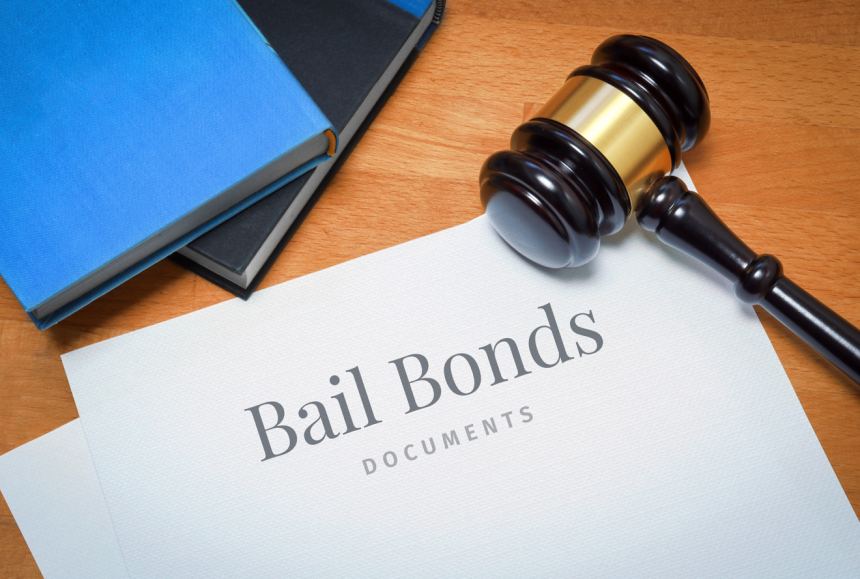Navigating the intricacies of the legal system, especially regarding bail bonds, can be overwhelming and complex. For individuals or their family members facing the challenge of securing release from custody, it’s imperative to grasp the detailed steps involved in obtaining a bail bond. This knowledge is vital to successfully maneuver through the legal procedures and ensure a smooth process for release.
This comprehensive article aims to demystify the bail bond process, presenting a clear and detailed breakdown of each necessary step.
Step 1: Arrest And Booking
The bail bond process begins when an individual is arrested and taken into custody. During this stage, the person is booked, which involves recording their personal information, the alleged crime, fingerprinting, and taking photographs. This procedure sets the stage for the subsequent steps in the bail bond process.
Step 2: Bail Hearing
The bail hearing is a pivotal moment in the bail bond process, occurring shortly after booking. In this court session, a judge or magistrate assesses the case to decide if the accused is eligible for bail and the appropriate amount. This decision is influenced by various factors, including the gravity of the alleged offense, the individual’s past criminal record, if any, and the likelihood of them fleeing or failing to appear in court. The outcome of this hearing sets the stage for the accused’s potential release and the financial implications of the bail.
Step 3: Understanding Bail Bond Options
Once bail is set by the court, understanding the different bail options available becomes essential. The primary types of bail bonds include cash bonds, which require the entire bail amount to be paid in cash; property bonds, which involve using property as collateral, and surety bonds, where a bail bond agent guarantees the bail amount.
Understanding these options allows the accused or their representatives to decide which route is most feasible and appropriate for their situation.
Step 4: Contacting A Bail Bond Agent
For many, the next step involves contacting a bail bond agent. This professional acts as surety, pledging money or property as bail for the appearance of the person accused in court. Selecting a reputable bail bond agent is critical, as they’ll be instrumental in navigating the legalities and financial aspects of the bail process.
Therefore, if you’re contacting a bail bond agent, it’s imperative to check the comprehensive guide on bail bonds in Pico Rivera or similar locations to better understand the entire process.
Step 5: Understanding The Costs
The financial aspect of securing a bail bond involves several costs, the most significant being the non-refundable premium. This premium, a set percentage of the total bail amount, is paid to the bail bond agent as their fee for the service. It’s imperative to understand all costs involved, including potential additional fees like processing or administrative charges.
Full awareness of these expenses is crucial to making informed decisions and preparing financially. This transparency can help avoid any unexpected financial burdens or hidden fees that may arise during the bail bond process.
Step 6: Completing Bail Bond Agreement
The completion of the bail bond agreement is a critical step in the process. After selecting a bail bond agent and understanding the costs, the defendant and the guarantor (if applicable) must agree to and sign this legally binding document.
The agreement sets forth the terms and conditions of the bail bond, including the defendant’s obligations to appear in court and the financial responsibilities of the guarantor. This document also details the consequences of failing to comply with these terms, emphasizing the importance of adhering to the agreement’s stipulations.
Step 7: Release From Custody
Once the bail bond agreement is finalized and the required premium paid, the bail bond agent initiates the process to secure the release of the individual from custody. The time required for release can vary significantly, influenced by factors such as the jurisdiction’s procedures, the efficiency of the court system, and the specific circumstances of the case.
The bail bond agent typically coordinates with the court and detention facility to expedite the release, ensuring that all procedural requirements are met.
Step 8: Compliance With Court Requirements
Post-release, it’s imperative for the individual to adhere to all court-mandated requirements strictly. This includes attending all scheduled court appearances without fail and complying with any additional conditions imposed by the court, such as travel restrictions or regular check-ins.
Failure to comply with these requirements can have serious repercussions, including the revocation of the bail bond, re-arrest, and the potential forfeiture of any collateral put up for the bond. This step underscores the need to respect and follow the legal process.
Step 9: Conclusion Of The Case
The bail bond process reaches its conclusion with the closure of the legal case. The outcome of the case determines the status of the bail bond. If the individual fulfills all court obligations, including attending all hearings, the bail bond is typically exonerated, releasing any collateral or obligations tied to the bond.
However, if the individual fails to meet these obligations, consequences can include the forfeiture of collateral and additional legal penalties. This final step marks the resolution of the bail bond agreement in alignment with the case’s outcome.
Conclusion
Obtaining a bail bond involves several critical steps, each requiring careful attention and understanding. From the initial arrest and booking to the final resolution of the case, each stage plays a vital role in securing temporary freedom for the accused while ensuring their appearance in court. It’s always advisable to seek professional legal advice to navigate this process effectively.













